Well, as I mentioned in the previous post, I have the mechanical repairs and modifications to the 400 Ton press completed.
It was a long haul project, but it is finally complete. The longest wait was for the repairs to the ram. After almost 4 months, I finally got my rebuilt ram back from Chrome Craft at the end of April. For the foreman running the job of repairing my ram, it was the job from HELL! He told me that if he had it to do over again, he'd just start over and machine me a new ram from scratch.
For the project coordinator that I was working with there, it was becoming the source of nearly daily frustrated emails (and/or phone calls) from me wanting to know WHEN?????? I was beginning to think that I'd have to find a big chunk of steel and have a new ram machined from scratch.
You might recall from the last update that by the end of Jan, I had the cylinder and the clamp ring already machined and by the first week in Feb I had the new seal delivered and in the shop. To say that I was chomping at the bit to get my ram back would be an understatement. In the end, it did (eventually) get finished and they did a great job - considering what they had to work with.
Mobile Base Fabrication - But, while I was waiting, I decided it would be a good time to fabricate a mobile base for the press - so that once I did have the press back together, I'd be able to move it around the shop more easily (rather than rolling it around on 3/4" pipe......Egyptian style). I started with a plan for a large 1" thick plate steel shape that would have two wheel assemblies towards the back of the press and a single post towards the front of the press. Like this:

Here I am machining the proper sized holes in the dolly flanges for the DOM tubing shaft:
Here is one of the (test-fit) dolly assemblies:
Here are the two dolly assemblies and front post positioned on the 1" thick plate steel plate that the base of the press will bolt onto....eventually:
Here is the mobile base with the dollies in place, the post and pad welded in place, and the holes drilled and tapped for mounting the press and moving yoke:
Here is the base of the press mounted to the mobile base:
At this point, all I needed was the finished ram and I could put the press back together.
Waiting For The Ram - Where is the RAM??? After what seemed like forever, I got the call that the ram was ready to inspect. So, the 3rd week in April, I stopped by the Chrome Craft facility to see how the ram looked. It was almost done, but needed a few more passes of polishing. Here is the ram in the turning device that they used to finish grind and polish it:
Here is the arm with the strip of abrasive that polishes the ram when dropped over the rotating ram:
Later that week they called me to tell me that the ram was ready to pick up. So, on the next commute home from work in LA, I went down and loaded the ram. Here it is loaded into the back of my truck:
And, unloading it into the shop the next morning:
A day later, I started the process of re-assembling the entire press. In the picture above you can also see the base of the press mounted to the mobile base.
Check Out The Ram - Once I got the ram into the shop, I quickly noticed that Chrome Craft never turned down the top of the ram after they had welded a bar across it to hold the center for the turning fixture. So, the first spacer rocked on top of the ram. This is the first part that will attach to the ram once it is installed into the press. That cannot happen!
Chrome Craft offered to turn it down, if I brought it back down to them. I didn't want to loose yet another month waiting for that to happen. So, instead, I used the tractor to set the first spacer on top of the ram.
I had previously painted the spacer, so it had gray metal primer on the bottom. By repeatedly setting the spacer on top of the ram and then taking it back off, the high spots on the ram would show spots of primer marking them. I would grind the high spots down and then set the spacer back down onto the ram and repeat the grinding. Here is the spacer back off so that I can inspect for the primer marks:
After doing this process several times, I had the spacer sitting pretty squarely on the top of the ram and it was not rocking. I was getting 5-6 good, large spots with primer marking them that were located evenly around the top of the ram.
This was good enough for me. I'm sure that the spacer will stay securely bolted to the top of the ram and not rock.
Cleaning The Cylinder - Time to move on to the next task. Put the ram into the cylinder. First, I had to give the cylinder a thorough cleaning. To do that, I started with a can of WD40 and sprayed down the entire inside of the cylinder and then scrubbed it with a wire brush. After that, I sprayed down the entire inside of the cylinder (top to bottom) with carburetor cleaner to wash off the WD40 and the rust, machining chips, dust, and sanding abrasive, etc. Finally, I washed it all down again with a round of brake cleaner to remove any last oil and crap. After soaking up all that brake cleaner with most of a roll of paper towels, I ended up with the cylinder looking like this:
Installing The Ram - Next, I used a can of red axle grease to re-coat the inner sleeve and the seal cavity to provide lubrication for dropping the ram down through it:
Next, I poured some hydraulic oil into a squirt can and covered the grease with a layer of oil. It makes for a very slippery combination to help with getting the ram to lower down through the seal and the sleeve. I'd never done anything like this, but this was the recommendation from the hydraulic guy at Chrome Craft, and seemed reasonable to me. So, here is the cylinder with the seal installed in place and covered with grease and hydraulic oil:
Now, I grabbed the ram with the gantry crane and lifted it up into position over the greased and oiled cylinder.
Then, I greased and oiled the ram, itself. Nothing left to do but throw caution to the wind and try to drop the ram down through the seal and the sleeve.
Well, on the first attempts, the ram would not start down through the seal. With slack chain on the chain hoist, I would try to roll the ram perfectly straight up-and-down, but it would not go down through the seal. It would just flop over in another direction. Argh! What to do?
After picking the ram back up. I sat in my "thinking chair" for a while and pondered the scenario. The bottom of the ram had a nicely rounded, smooth radius on the bottom edge. This was causing the ram to flop instead of drop. Then, it occurred to me....maybe putting the clamp ring on top of the seal and putting the bolts in finger tight, it might help stabilize the ram and get it to start STRAIGHT down.
That was the key. I put the clamp ring on and when I started the ram down through the clamp ring it stopped again when the bottom radius of the ram got to the urethane seal. But, this time, when the chain went slack I grabbed the top of the ram and just shook it a few times and.....whomp! The ram dropped through the seal and caught again on the chain. Here's the proof:
All I had to do then was pull on the chain hoist to lower the ram until it hit the bottom of the cylinder:
SWEET!!!
Here's the cylinder and clamp ring after I put some new paint on them:Sides Go On - Through the course of the next few days I painted the slab sides of the press and installed them:
Fixing The Head - Then, I got to the head of the press. This was a mess. At some point, someone wanted holes through the head where the 1" x 4" flat bars ran across the press. So, they hacked out some spaces and then welded some old, ratty gear bar across the gaps. It looked pretty crappy:
I won't be using those holes, so I decided to clean up the head a bit. I started in on it with a small grinder with a cutting blade and big hammer... until it looked like this:
Then, I scrounged around the shop and found some 1" flat bar pieces and started to weld them into the holes:
After most of a day's work, mostly grinding, I had it looking much better:
Then, some primer paint:
And, finally, some new color and it looks almost new again:
Installing The Head - Now, with the press sitting on the new mobile base, the top of the press is approx. 5" closer to the gantry and the chain hoist than it was before. I was pretty sure that I was going to have to block up my gantry to get more clearance. But, after some more time in the "thinking chair," I came up with a better idea. Take these parts:
and make this:
Put it through the center hole in the head of the press, remove the hook off of the chain hoist chain, put the bitter end of the chain through the shackle pin, and.....Tah-Dah:
Lifting the press head into position (this thing weighs about 1700lbs):
With that, the basic frame of the press is back together. Yes!!!
BTW, there REALLY IS a "thinking chair". It's right there in the pic above - on the right.
At this point, the sides are being held to the base and the head with just eight 1" bolts. You can see the heads of 4 of these bolts on the slab-side facing the camera:
BIG BOLTS - Time to put the "BIG" bolts back it. But, first they need some paint. Here's the primer on them after a good wire wheel cleaning:
And, the paint. I bought every store in the north state out of Krylon Pumpkin Orange paint. I'm not kidding! I bought every can from every store from Red Bluff to North Redding! Anyway here they are:
Final tightening of the head bolts. That is a 2-3/8" combination wrench that is 30 inches long (with a cheater bar):
Painting - Here all the bolts are installed and the lower studs are installed. Behind the scenes, there was a boat-load of wire wheeling and other cleaning to get these bolts and nuts cleaned-up and ready to re-install. Here they're all getting a new coat of primer:
Just before the primer paint above, I decided that I would not need the big lifting lugs that were welded to the front and back of the head of the press. So, I ground those off and cleaned the areas up before putting primer on the head.
After several more coats of Pumpkin Orange paint, the basic press is re-assembled and looking good (yeah, I still have to paint the lower part of the cylinder):
The clamp ring with all the hold-down bolt heads painted up:
Even The Washers Are Work - Before I could do the final install of the clamp ring, I had to modify the washers I used with the bolts to secure the clamp ring. The only washers I could find readily available here locally were 3" OD washers. The problem with them is that they would hang over the edge of the clamp ring pretty substantially. I thought that would look crummy, so I had to turn them down to 2.5" OD.
To accomplish that, I had to fire up the lathe and make a fixture to hold these washers on the ID that would still allow me to machine off the OD of each of them. Here's what I came up with. A piece of aluminum round bar, hole drilled and tapped into the middle. Then a shoulder cut the same size of the ID of the washers - but just a little thinner than a washer. Then, a heavy and smaller OD washer in the middle to clamp the washers to be trimmed to the end of the aluminum bar. Here's one of the washers being machined down to 2.5" OD:
Here, you can see the difference before and after the lathe work on the washers. I had to do this for all 16 bolts that needed a washer:
As you can see in the photo above, these cleaned up and installed very well. It made for a much nicer looking clamp ring without the washers hanging over the edge.
Install The Pieces - Now, it was finally time to install all of the components that transform this press into a rubber pad press for making airplane parts. I didn't take pictures of each step of the process, as I have covered most of that in a prior blog update when we initially built these parts. Here is the press with most of the rubber pad press components in place (spacers, platens, bolster and rubber box):
Front view. The most notable components missing from these pics are the shoes that attach to the upper platen and ride along the inside edges of the slabs that guide the top of the platen (which keeps the ram centered in the press cylinder and aligned with the cylinder sleeve during operation). Those shoes attach at the outer corners of the lower platen just below the red bolster. You can see the 4 bolt hole patterns on each side:
Here is a pic with the shoes installed and also the bracket under the bolster that holds the bolster in place. The wood shims are there to hold the bolster perfectly centered in the rubber box while I installed the bracket (brackets, actually. There's one on the front shown below and another in the back):
As you can see from the above pic, I already had the hydraulics lifting the ram in order to get the brackets done. Which, leads me to the next topic.
Hydraulics - With regard to the hydraulics, the testing went like this: I hooked up the hydraulic unit and filled the reservoirs. It took a couple of times filling the reservoir and pumping oil into the cylinder that I finally got oil coming out the vent (bleeder) hole. Then, I put the plug back into the bleeder port and I filled the reservoir one more time. When I pushed the valve again the ram went up! Sweet!
I ran the ram up and down a few times with no load on the ram. Just letting it move up and down to see how things were moving. All seemed well. The next step was to put some load on the ram. To do this, I placed two 2" thick poly panels that I have on the bolster (between the bolster and the rubber box). Then, I ran the pressure up on the ram. Initially, I ran it up to about 500 psi and notice a bit of leaking from the main seal. Crap! Really!.
I decided that the best thing would be to just load it up as much as I could, so I gave it some more oil and the pressure climbed to about 1800psi. Then, it kinda stabilized at 1800psi - even though I was still pushing the valve to increase the pressure. What!
Then, I looked over at the ram and saw that it was still moving up!?!? Then, it hit me! Whoa!! I let go of the valve and relieved the pressure. The ram stopped and then started to come back down. I pulled the poly panels out and confirmed what I thought was happening. At 1800psi, the press was starting to "cookie cutter" the poly panels. It was literally shearing the panels and trying to press perfect bolster shaped poly rectangles up into the rubber box!!! Nice! It's working!!
When I got the panels out, I could clearly see the shape of the bolster pressed into the bottom of the lower poly panel:
And, I could see the perfect shape of the rubber box pressed into the top of the upper panel:
Well, at least I was making some kind of progress.
The press still had the oil around the ram, but it didn't seem like it had gotten any worse. So, I cleaned up the oil, and shut the shop down for the night. The next day, I went out and stacked some 2x6 boards on the bolster and ran up the press. At about 700psi, the wood was sounding terrible and it was getting crushed to toothpics. So, I let go of the valve, but did not relieve the pressure. I just left the valve in the "hold" position. As the wood relaxed the pressure came down to about 550psi and then stayed there for over 10mins. I inspected the ram and there was ZERO leakage! Yay!
It seems that the 1800psi from the day before and the moving up and down must have seated the seal and it was now holding pressure very well. Nice to see.
Back To The Mobile Base - Now, the only remaining thing to accomplish was to finish the mobile base. Part of the design of the mobile base was to have a removable yoke, or a tongue, mounted to the front so that a floor jack could be placed under it and slightly lift the base off of the post. This would put all the weight on wheels and allow the press to move about. When it was done being moved, the yoke could be removed and placed out of the way.
To accomplish this, I headed out to my favorite steel place in town and found some scraps of 2"x4" box tubing with a 1/4" wall. I also bought some more 3/4" DOM (Drawn-Over-Mandrel) tubing to use as sleeves in the tubing. Here they are ready for fabrication:
Getting the idea going:
Boring the holes for the DOM sleeves:
Cutting the DOM sleeves:
Test fitting the yoke arms, sleeves and temporary bolts:
The yoke arms with bevel cut ends and the sleeves welded in and test fit:
Welding the two arms together, welded a plate to reinforce the junctions and welded a puck in the middle as something for the jack to "grab ahold of":
All put together and mounted to the base:
Ready to work:
And, working with the floor jack (see the space under the post?):
With the jack under the yoke, I could almost push the press by hand. It's going take more than one person to move the press with this mobile base, but it should be a lot easier than Egyptian style.
With this finished, all of the mechanical work is done with the press. As I mentioned in the previous post, the only thing that remains to be done is finding and installing the urethane pad in the rubber box. That's really, super easy. Once you have the urethane block, you literally set it on the bolster, line it up and shove it into the box. Friction will hold it up in the box. Finding the urethane at a reasonable cost will be the hard part. I will post about that in a future update.
And, THAT my friends, is how you finish the rebuild of a 400 Ton slab-side press. Thanks for checking out my work. I hope you found this informative. Maybe it will give you some ideas for projects you have around your shop. See ya next time.
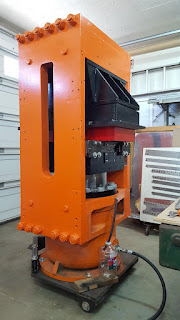


























































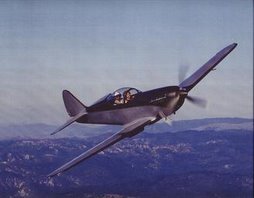
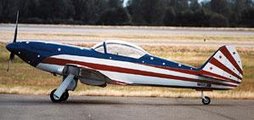
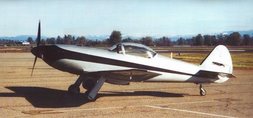
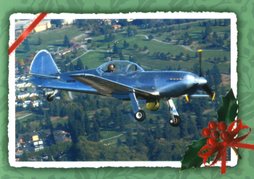
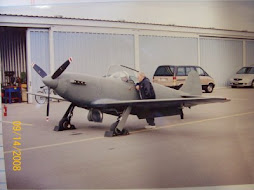
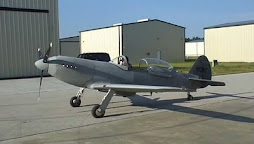

No comments:
Post a Comment